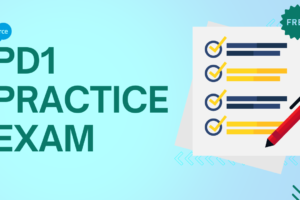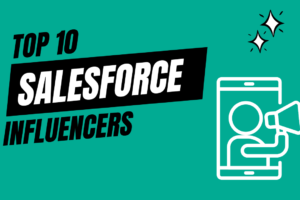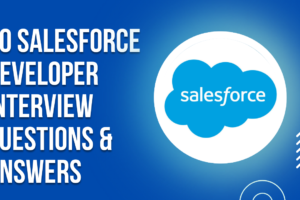
Salesforce FAQs
1. What is Salesforce, and why is it used?
Salesforce is a cloud-based CRM that helps businesses manage customer relationships, automate workflows, and improve sales and service operations.
2. How does Salesforce CRM work, and what are its key features?
Salesforce CRM organizes customer data, automates sales processes, and provides AI-driven insights to enhance productivity and customer experience.
3. What is the difference between Lightning Experience and the Lightning Framework?
Lightning Experience is Salesforce’s modern UI for better performance and usability, while Lightning Framework is a development platform for creating advanced applications.
4. Does using Salesforce Lightning involve extra costs?
Lightning Experience is included in Salesforce plans, but additional features and customizations may require extra licensing.
5. What are the different Salesforce cloud offerings, and what are they used for?
Salesforce provides various cloud solutions:
- Experience Cloud for building portals and communities
- Sales Cloud for managing leads and opportunities.
- Service Cloud for customer support and case management.
- Marketing Cloud for digital marketing campaigns.
- Commerce Cloud for online stores and eCommerce.
6. How can I open encrypted emails in Salesforce Service Cloud?
To open encrypted emails:
- Use Salesforce Shield Encryption if enabled.
- Ensure proper email relay settings for secure communication.
- Use third-party encryption tools that integrate with Salesforce.
7. What are Salesforce Objects, and how do they work?
Objects in Salesforce are database tables storing records. There are two types:
- Standard Objects (e.g., Accounts, Contacts, Opportunities).
- Custom Objects (created for specific business needs).
8. How to fix errors when creating object relationships in Salesforce?
- Ensure field types match correctly.
- Check for duplicate or validation rule conflicts.
- Verify user permissions for accessing related objects.
9. What are Record Types and Page Layouts in Salesforce?
Record Types customize the behavior of records by controlling layouts, picklist values, and processes, while Page Layouts define how fields and buttons appear.
10. What is the difference between Process Builder and Workflow Rules?
- Workflow Rules perform simple automation like email alerts and field updates.
- Process Builder handles complex automation like record creation and multi-step logic.
11. When should I use Apex vs. Lightning Web Components (LWC)?
- Apex is used for backend logic, triggers, and batch jobs.
- LWC is used for building fast and dynamic UI components.
12. What are Salesforce Triggers, and how should they be used?
Triggers are Apex scripts that run before or after a record is inserted, updated, or deleted. Best practices
- Avoid SOQL queries inside loops.
- Use trigger handlers for better structure.
13. What is the best way to import and export data in Salesforce?
- Data Loader for bulk data operations.
- Data Import Wizard for guided data imports.
- APIs for automated integrations with external systems
14. How do Salesforce security settings work (Profiles, Permission Sets, Sharing Rules)?
Profiles define base permissions.
Permission Sets grant additional access.
Sharing Rules extend access beyond default settings.
15. How does Salesforce API integration work, and when should you use it?
APIs allow Salesforce to connect with other applications:
- REST API for web applications.
- SOAP API for enterprise integrations.
- Bulk API for large data transfers.
- Streaming API for real-time updates.
16. What are Salesforce Governor Limits, and how to handle them?
Governor Limits control system resource usage. To optimize:
- Use batch processing for large data sets.
- Minimize DML operations inside loops.
- Optimize SOQL queries to fetch required fields only.
17. What is Salesforce DevOps, and which tools are used?
Salesforce DevOps focuses on CI/CD and version control. Tools include:
- Salesforce DX for development and packaging.
- Git & Jenkins for version control and automation.
- Copado/Gearset for deployment and release management.
18. How to implement CI/CD in Salesforce effectively?
- Use Git for version control.
- Automate testing with Apex test classes.
- Deploy using Salesforce DX and CI/CD pipelines.
19. Why should businesses invest in Salesforce training for their teams?
Salesforce training helps teams:
- Maximize CRM capabilities.
- Automate processes efficiently.
- Increase sales and customer satisfaction.
- Stay updated with new Salesforce features.
20. What are the career opportunities in Salesforce?
Salesforce is one of the fastest-growing platforms, offering multiple career paths:
- Salesforce Administrator – Manages and configures Salesforce for businesses.
- Salesforce Developer – Builds custom applications using Apex and Lightning components.
- Salesforce Consultant – Works with clients to implement Salesforce solutions.
- Salesforce Architect – Designs and oversees complex Salesforce implementations.
- Salesforce Marketing Cloud Specialist – Focuses on digital marketing automation.



